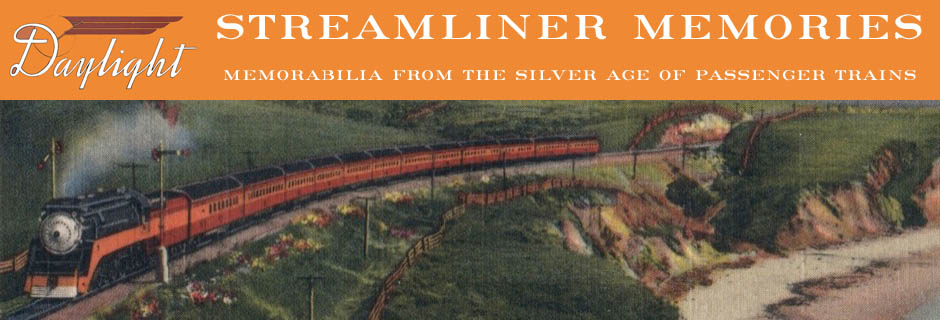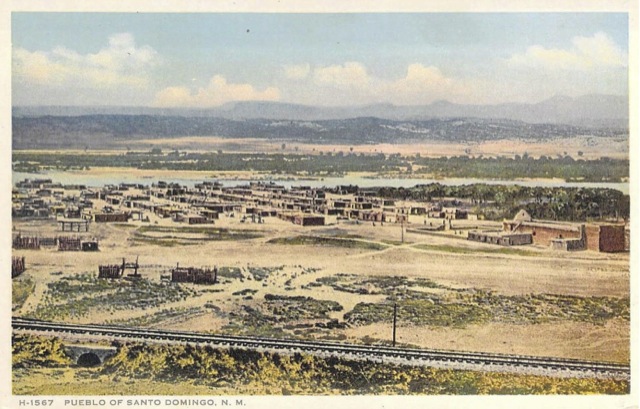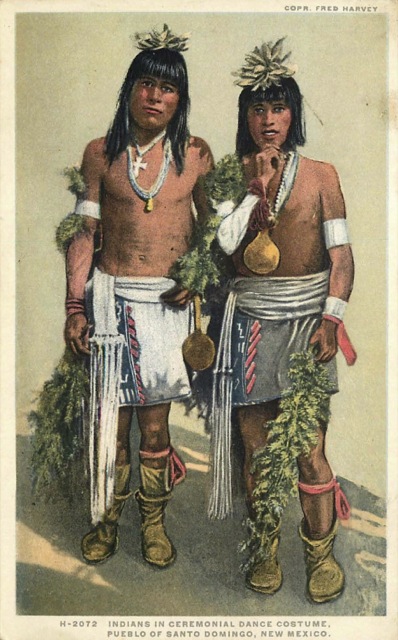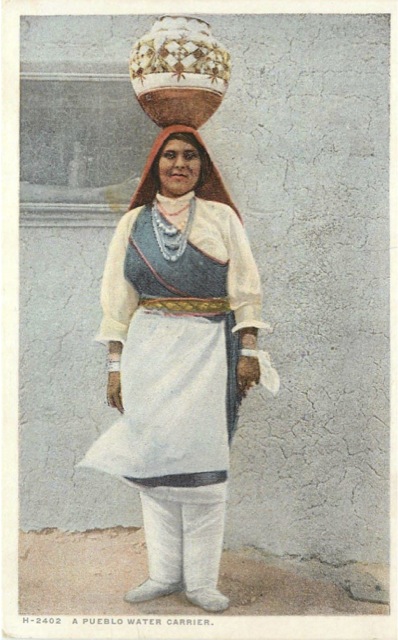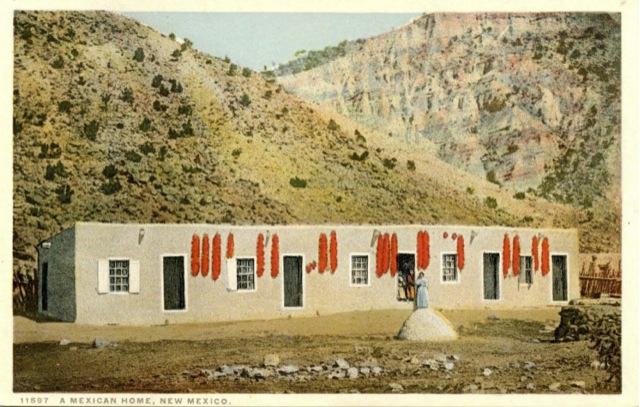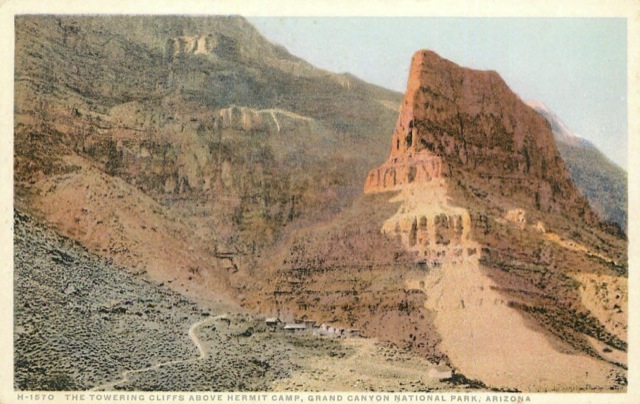In 1907, the Postal Service decided to allow people to use just half of the back of a postcard for an address, leaving the rest for a message. This allowed postcard companies to use the entire front of the card for a photograph or other image. Fred Harvey and the Detroit Publishing Company took full advantage of this.
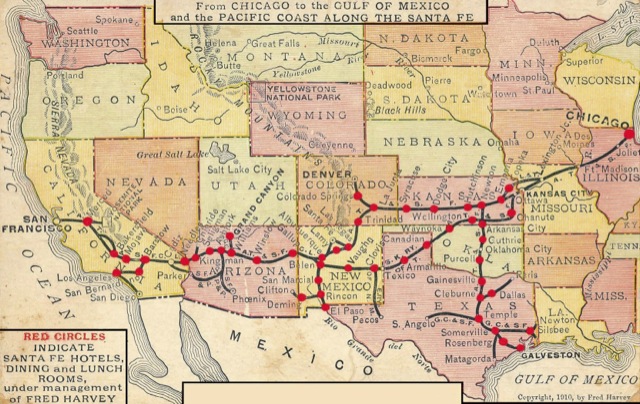 Click images to download PDFs of these postcards.
Click images to download PDFs of these postcards.
This map postcard shows the locations of Fred Harvey hotels and restaurants. In the white box at the center bottom of the card, later versions had the words, “I am at the place marked X today,” with space for a date.
Tourists found New Mexican Indian pueblos and villages fascinating, so Fred Harvey published many cards showing Indians and their lifestyles. In 1926, Fred Harvey began offering Indian detours to Santa Fe passengers who wanted to visit Santa Fe, Taos, and other towns and Indian vlllages that they couldn’t see from the transcontinental trains.
These dancers in ceremonial costumes are from the village shown in the previous postcard.
This postcard doesn’t say which pueblo this woman is from, but it was quite likely the Santo Domingo pueblo featured in the previous two cards.
The lifestyles of Hispanics–which this postcard calls “Mexicans” even though they lived in the United States–were probably just as exotic as those of Native Americans.
Finally, this scenic postcard shows the road to Hermits Rest in the Grand Canyon. The building, which was designed by Mary Colter, can be seen in the center bottom of the card.
All of these postcards are marked “Phostint” on the back. Phostint was the name Detroit Publishing used for a lithographic process it used to make the cards. Originally developed in Switzerland, where it was called Photochrom, Detroit either refined the process or simply changed the name after it licensed it from the Swiss company.
Photo printers had not yet developed the process of tiny overlapping dots of cyan, yellow, magenta, and black to create illusions of full color cards. Instead, each color had to be printed separately, and Detroit applied anywhere from eight to twenty different colors to each card. The Henry Ford Museum web site has a graphic description of this process.
